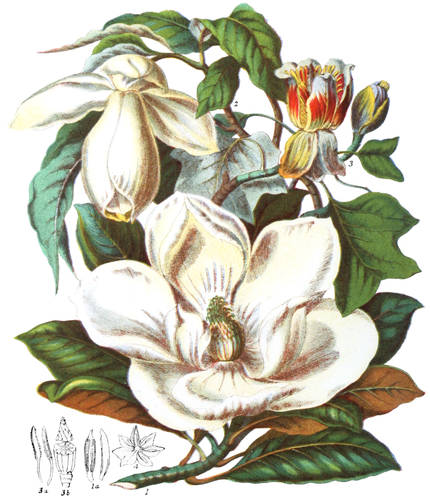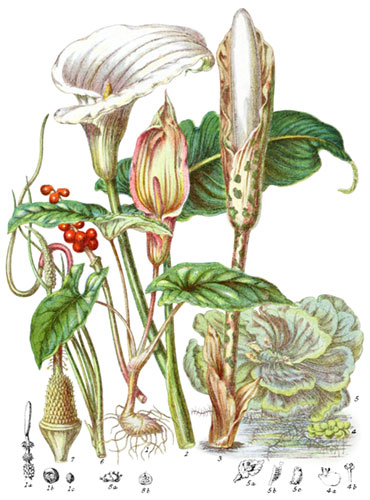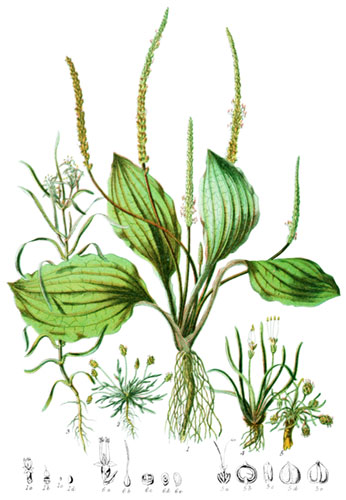Key characteristics
Trees and shrubs, often having spines. The leaves are alternate, simple, rarely compound, entire at the edges, without stipules; occasionally wanting. The flowers are small, growing from the base of the leaf-stalks, often sweet-scented; the calyx is small, entire or slightly toothed, often becoming enlarged and fleshy. The petals are four or six, somewhat leathery, attached to the base of the ovary, valvate in the bud, either altogether separate or cohering in pairs by means of the stamens; the central vein of the petals is usually hairy or furrowed. The stamens are generally not all perfect; the imperfect are opposite the petals, to which they in part adhere; the perfect are alternate with the petals and cohere with them; the anthers are oblong, two-celled, and burst longitudinally. The ovary is free or partially adherent to the calyx, placed in a disk which is sometimes thickened and united with the calyx, one-celled, or imperfectly three or four-celled; containing one, two, or three ovules. The style is slender, the stigma simple, the fruit somewhat drupaceous, not gaping, often invested by the enlarged calyx, one-celled, and one-seeded; the seed is pendulous, and contains abundant fleshy albumen.
This small Tribe appears to have the most affinity with the Orange and the Rue tribes.
These plants are harmless; some are eatable.
Select plants in this order
Not all plants listed are illustrated and not all plants illustrated are listed.
- Olax is said to have derived the name from the Greek for a furrow, such a line being generally found along the centre of the petals; others suppose it was adopted from the native name of Mœla-hola in Ceylon, signifying Salad-tree, Olax zeylanica being there used as a herb for salads, and esteemed for that purpose, although the wood has an unpleasant odour.
- Olax stricta (1) is one of a stiff upright nature; the opened corolla shows the five imperfect rudiments of stamens besides the three perfect filaments bearing anthers.
- O. scandens is a climbing shrubby plant brought from the East Indies in 1820.
- O. psittacorum was named Bois de Perroquet by the French colonists in the Isle de Bourbon, from observing the extreme fondness of parrots for the fruit, which resembles an olive in size.
- Heisteria coccinea (2) is a native of the dense woods which border the rivers in the island of Martinique, flowering in February and March, and ripening the fruit in June. The effect is very singular, the enlarged red calyxes remaining with the fruit, which is a favourite food of doves, but does not seem to be eaten by man. The trees attain a height of twenty feet, and are the much branched; the flowers are small and inconspicuous, scarcely visible amidst the large leaves at the base of which they grow.
- Ximenia Americana (3) is a tree bearing fruit like a plum in form, with a thin yellow pulp, of a sweet and subacid flavour, esteemed in Senegal by natives and Children, but like many of the inferior fruits of the Tropics, rough to the taste. The small white flowers are not of much beauty, but extremely fragrant, scenting the woods of St. Domingo, carthagena, and Minas Geraes in Brazil, confirming the theory of the experiments made by Schübler and Kohler, that white flowers are the most frequently odoriferous.
- Iacina Senegalensis forms a connecting link with the Orange Tribe, from its general habit of growth, and its glandular disk; the stem and branches are thorny, the fruit yellow when ripe, and of agreeable flavour.
Locations
The few trees and shrubs of this Tribe belong entirely to the Tropics, or those countries immediately adjoining; existing in the East Indies, Africa, South America, and New Holland; one only is known in the West Indies.
Legend
- Olax stricta, Upright Olax.
- Flower magnified.
- Flower opened.
- Ovary and Pistil.
- Fruit.
- Section.
- Heisteria coccinea, Scarlet Heisteria. West Indies.
- Ximenia Americana, American Ximenia. America and Senegal.
-
- Apodytes dimidiata. Flower opened.
- Ovary and Pistil.
- Section of Ovary.
Explore more
Posters
Decorate your walls with colorful detailed posters based on Elizabeth Twining’s beautiful two-volume set from 1868.
Puzzles
Challenge yourself or someone else to assemble a puzzle of all 160 botanical illustrations.





